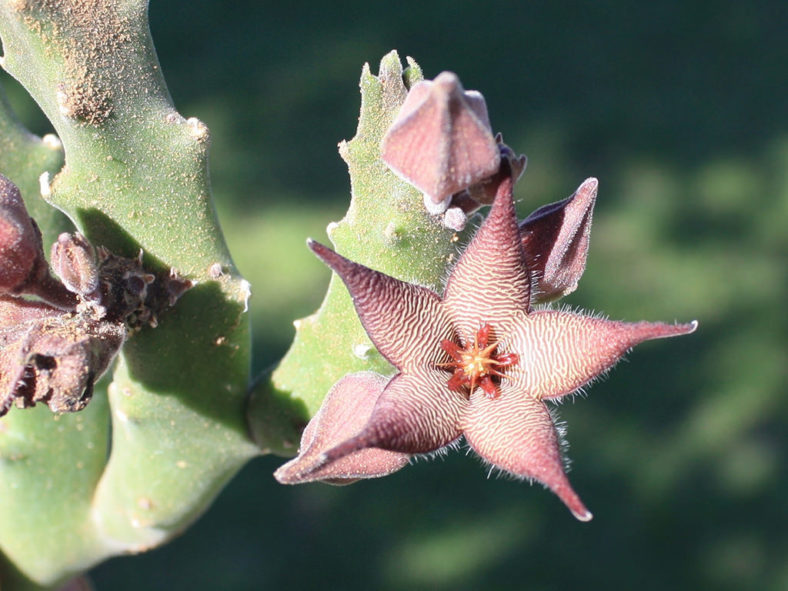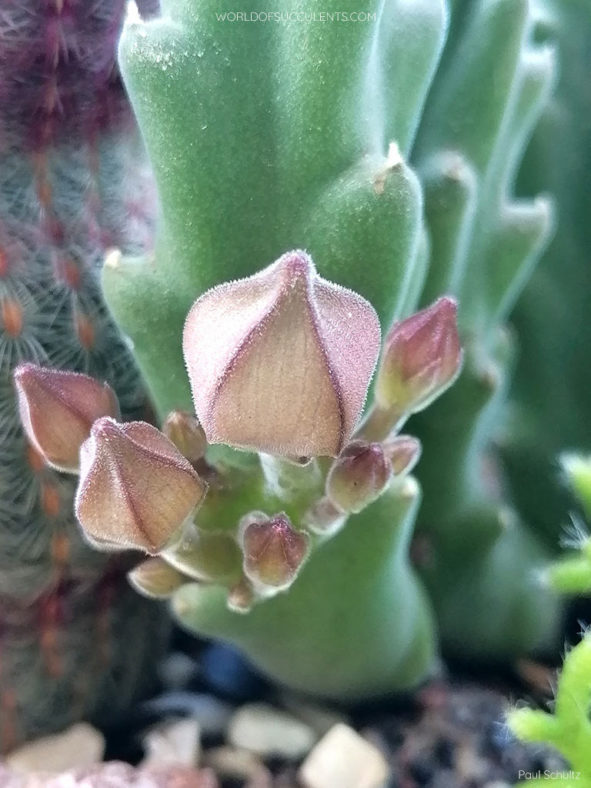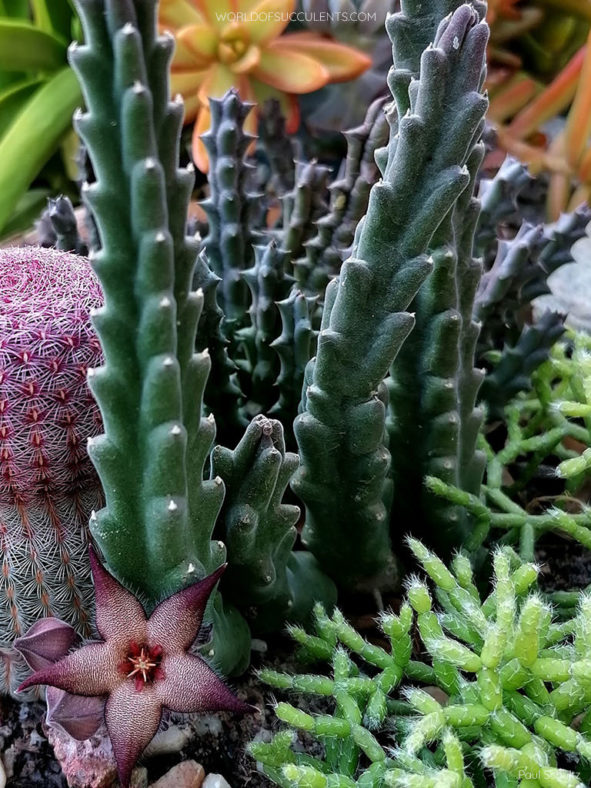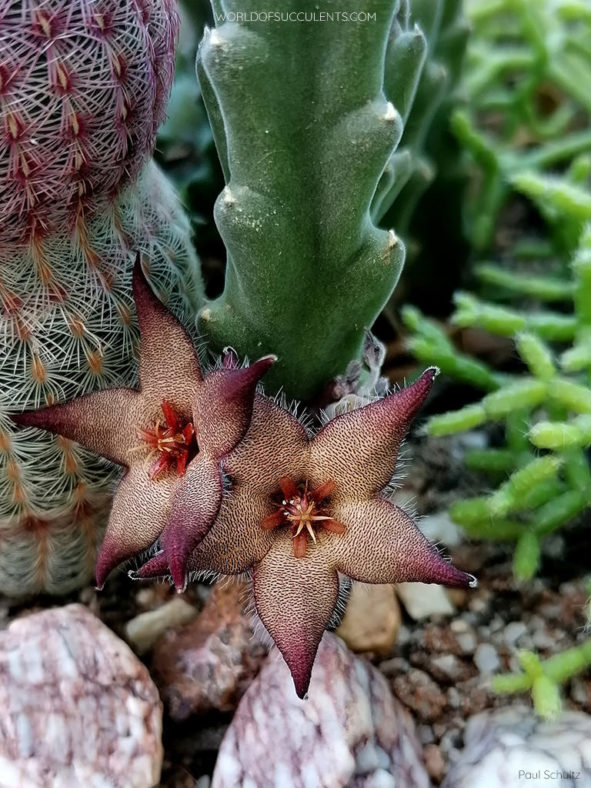Scientific Name
Stapelia acuminata Masson
Synonym(s)
Ceropegia indocta, Gonostemon acuminatus, Stisseria acuminata, Stissera acuminata
Scientific Classification
Family: Apocynaceae
Subfamily: Asclepiadoideae
Tribe: Stapeliae
Genus: Stapelia
Etymology
The specific epithet "acuminata (pronounced ah-kew-min-AY-tuh)" means "pointed or tapering to a point" and refers to the tip of the flower buds that tapers to a conspicuous point.
Origin
Stapelia acuminata is native to South Africa. It occurs from Springbok to Vanrhynsdorp in the Namaqualand area in Northern Cape and usually grows under bushes on gravelly soil or between rocks.
Description
Stapelia acuminata is a small succulent that forms a diffuse clump of decumbent stems with tubercles usually joined into four obtuse angles and a distinct groove between the angles. The stems are green, velvety, and usually suffused with purple. They can grow up to 8 inches (20 cm) long and 0.6 inches (1.5 cm) thick. Each tubercle bears towards the apex a leaf-rudiment that soon dries out.
The attractive flowers are more or less flat, with a slight depression in the center, and appear on peduncles from below the middle of the stems, usually in fall, opening successively. They can reach up to 1.6 inches (4 cm) in diameter. The corolla is five-lobed, outside yellow-green to purplish, and quite densely covered with fine, smooth, transverse ridges on the inside. The upper surface of these ridges is yellowish, while the ground color between them is red- to purple-brown. Beyond their middle, the lobes become plain purple-brown. The margins of the corolla lobes are adorned with white hairs. The corona has narrow, spreading lobes. Outer corolla lobes are usually orange-brown to purplish, while the inner lobes are cream- to yellow-spotted and striped with brown to red towards the base.

How to Grow and Care for Stapelia acuminata
Light: S. acuminata thrives in full sun or partial shade during the hottest summer days. Too much sun causes stems to develop protective pigmentation or get sunburned, while too little light leads to weak, thin stems and decreased flower production. Indoors, place the plant near the brightest window in your home.
Soil: The right soil is crucial to successfully growing S. acuminata. Use a commercial potting soil mix for succulents, or prepare your own with 50 to 70 % mineral grit, such as coarse sand, pumice, or perlite.
Temperature: This plant thrives in warm outdoor environments with low to moderate humidity. It does not like winter cold and should remain fairly dry and warm during its winter dormancy. S. acuminata can withstand temperatures as low as 40 °F (4.4 °C). USDA Plant Hardiness Zones 11a to 11b, 40 to 50 °F (4.4 to 10 °C).
Watering: S. acuminata has typical watering needs for a succulent. During the growing season, water your plant thoroughly and allow the soil to dry between waterings. The plant goes dormant in winter and needs almost no water, about once a month.
Fertilizing: If you want to keep your plant healthy and thriving, fertilizing during the growing season is a good idea. Feed with water-soluble fertilizer diluted to half the recommended strength.
Repotting: S. acuminata benefits from fresh potting soil every two or three years. Repot your plant in spring, just before the growing season begins. Choose a container with drainage holes.
Propagation: The best way to propagate this succulent is by stem cuttings. Take cuttings during the growing season to ensure good rooting. S. acuminata is also easy to grow from seeds. Sow the seeds in spring.
Learn more at How to Grow and Care for Stapelia.
Toxicity of Stapelia acuminata
S. acuminata has no toxic effects reported. It is safe around pets and humans.
Links
- Back to genus Stapelia
- Succupedia: Browse succulents by Scientific Name, Common Name, Genus, Family, USDA Hardiness Zone, Origin, or cacti by Genus
Photo Gallery
Click on a photo to see a larger version.


